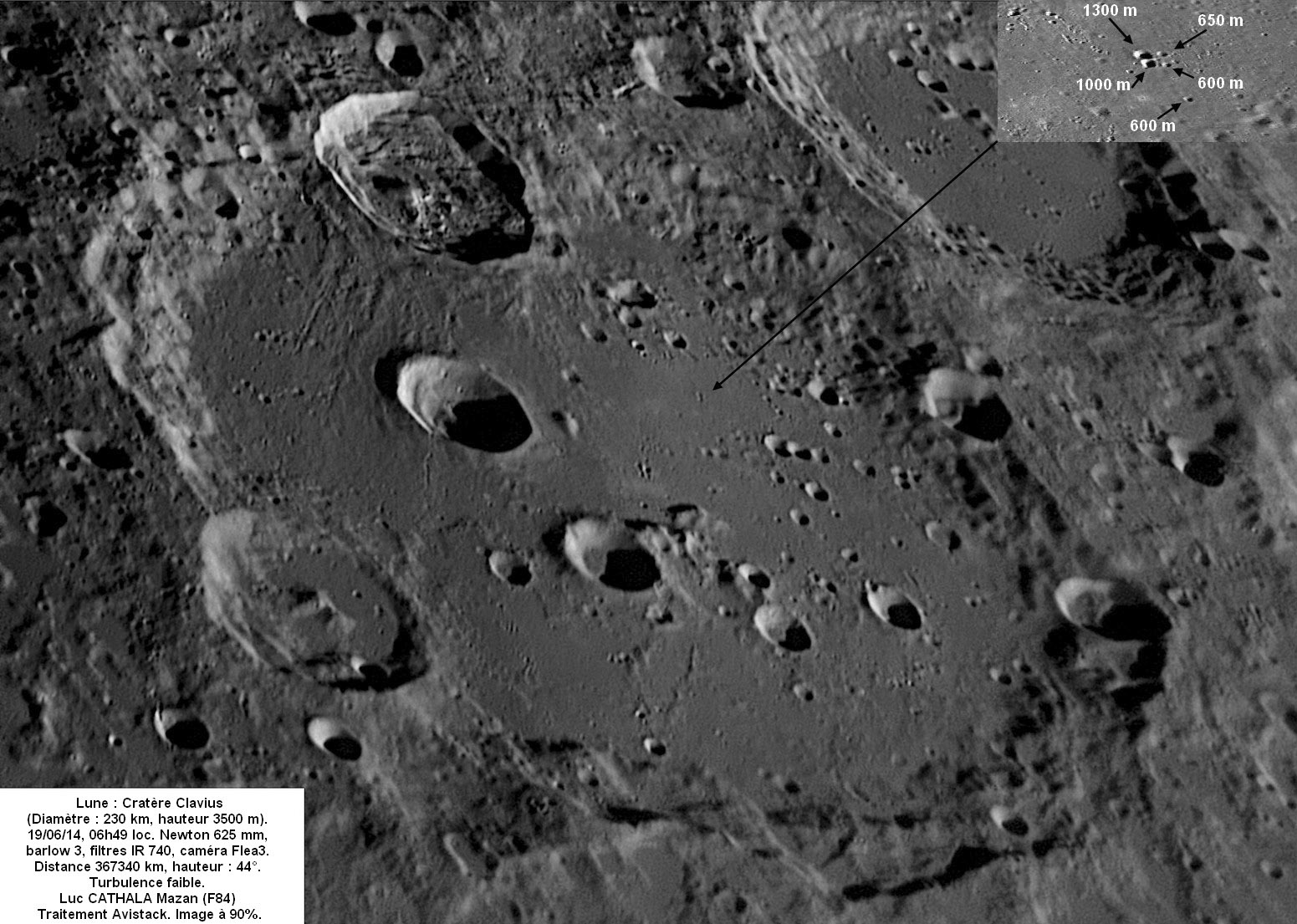July 3, 2014
Little Ones in a Big One

image by Luc CATHALA Mazan, Vaucluse FRANCE
A long-standing challenge is detecting the small craters on the floor of Plato. Because the floor is generally flat and featureless, the location of small crater pits can be easily seen. Small pits occur everywhere on the Moon, and in this image Luc identifies some small ones on the floor of Clavius. The inset image from LRO shows two crater pits that are 1.0 and 1.3 km wide that are fully seen on the large image. Three other small craters about 600 m wide are partially detectable on Luc's image. This seems to be about the best resolution observers have achieved from Earth. In general, resolution like this is excellent for depicting details that allow identification of all the major types of lunar landforms. And if we have similar landforms on Earth - as is the case for impact craters, lava flows, volcanic domes and sinuous rilles - we can confidently interpret the origins of those lunar features. Ten to twenty times better resolution, as with LRC, opens up a new scale of previous little seen features - especially details of the modes of movements of impact melt - but does not generally result in the discovery of entirely new classes of features. LRO also supplies new information on the topography and physical properties of lunar materials. It is wonderful that we now have access to most types of data that any lunar scientist would want.
Chuck Wood
Technical Details
19/06/2014 at 04:49 GMT, taken with my newton 625 mm 2739mm focal length, on equatorial platform, all home made (excluding mirrors ) Barlow 3 , IR 742 filter, camera Flea3, low turbulence . Processed with Avistack, Registax.
Related Links
21st Century Atlas chart 15.
Luc's webpage
Yesterday's LPOD: Smooth Evidence
Tomorrow's LPOD: Red, White & Blue On the Moon
COMMENTS?
Register, Log in, and join in the comments.



